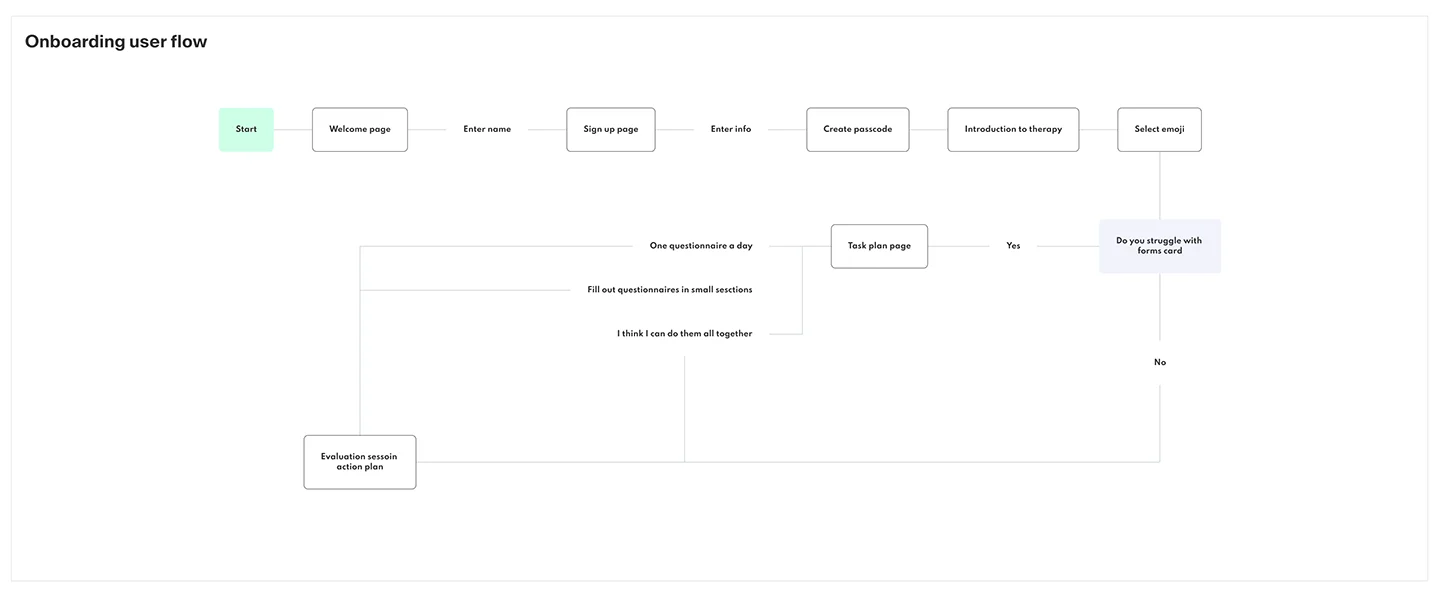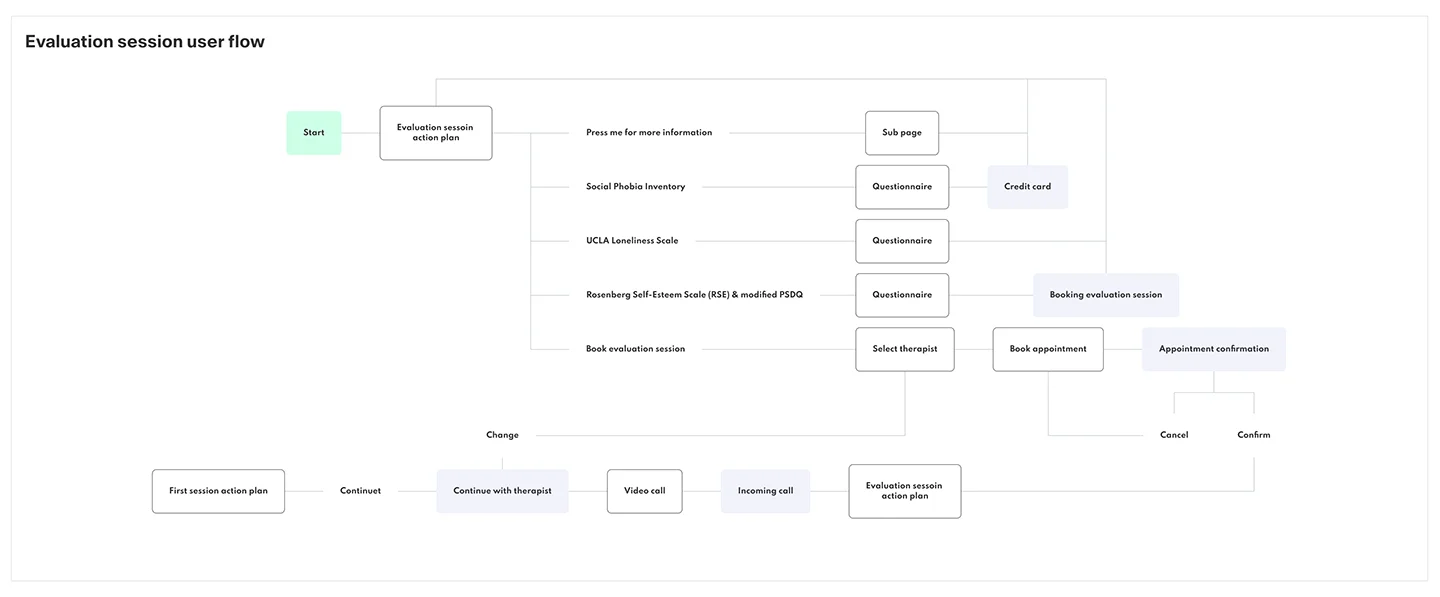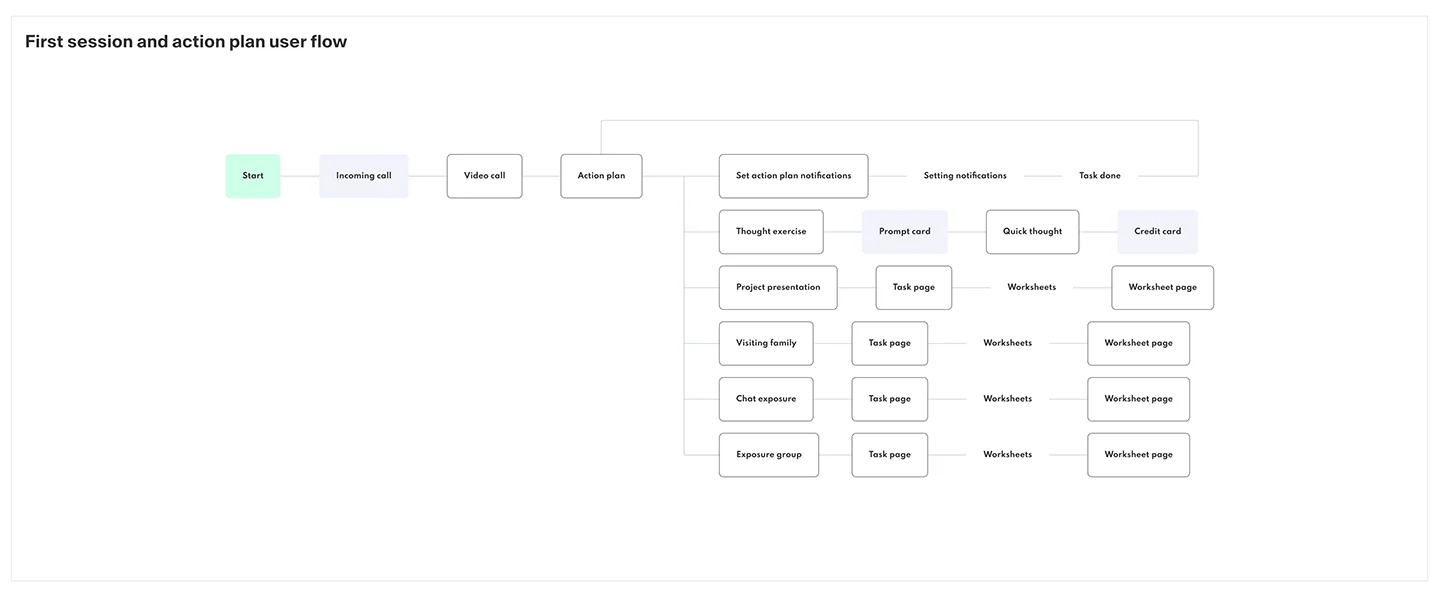Experience Exposure
Experience Exposure synergizes Cognitive behaviour therapy (CBT), Social Skills Training (SST) and Exposure therapy into an experience that reduces social anxiety and loneliness by improving their social performance, self-efficacy and fear associated with social situations.
PRODUCT DESIGN RESEARCH DESIGN

Research question
What is the relationship between social anxiety and loneliness and how can these commonalities be used to rehabilitate and prevent these forms of depression/anxiety.
Literature review
Social anxiety and loneliness are very prevalent issues in our modern society, and both have severe mental and physical consequences if not addressed. Many barriers to treatment prevent individuals with social anxiety and loneliness from seeking out or receiving the proper treatment. My approach began by locating scholarly sources that related to the research question. During my research, the topics that emerged were: Comorbid Depression/Anxiety, Loneliness, Social anxiety, Adolescence, Social skills deficits, Pharmacotherapy, Cognitive behaviour therapy, Social prescribing, Social skills training, Covid 19, Online delivery of treatment and Cyber friends. My literature review's significant findings identified the role of fear, self-efficacy, and social skills as the fundamental relationships between social anxiety and loneliness.
Design project proposal
Both with COVID-19 and the relevance of twenty-first-century digital environments, the literature shows the opportunities to deliver these models online to break down the barriers and make treatment more widely accessible to individuals with social anxiety and loneliness. This project's desired outcome is to create a digital environment that synergizes a CBGT and SST program with an online community of patients that allows for constructed and safe exposures. To achieve this in my proposal, I identified the following methodologies; research report, benchmark analysis, personas, user flows, prototyping, usability testing and refinement as the necessary methods to expand upon my research and develop a product that achieves the project's goal.
Dissemination
I will disseminate my research findings by designing a digital experience (app) that will allow patients of social anxiety and loneliness, 14 years of age and up, access to a flexible program that synergizes CBT/CBGT, SST models and exposure therapy. The digital experience will help diagnose patient's levels of social anxiety, loneliness and depression through selected surveys.
After users are diagnosed, the user will be presented with a customized CBT/CBGT and SST program best suited to their results. Users will then complete the program with the aid of a medical clinician supporting them throughout the program. During and upon completion of the program, users will have access to a community of other users in which they will complete varying levels of exposure in safe environments. This experience aims to reduce social anxiety and loneliness by improving their social performance, self-efficacy and fear associated with social situations.
Research report
My research methods began with a research report based on Judith S. Beck and Aaron T. Beck's (2021) Cognitive Behavior Therapy, Third Edition and Ronald E. Riggio and Ryan K. Merlin's (2012) Social Skills Training Guide. My findings allowed me to break down the SST and CBT methods into the app's major user experiences. Based on this report, the app explores the Assessment, Evaluation session, First session, Action plan, Recording automatic thoughts, and the exposure experiences that are core to the rehabilitation of patients with social anxiety and loneliness.
Personas and Benchmark analysis
Based on the research, I developed personas and a benchmark analysis, which significantly influenced the app's design system. The app's visual appearance is simplistic and intended to appear as any other task app to reduce any embarrassment or fear an anxious user may experience using the app in a public setting.

User Flows
The user flows are constructed based on the findings of the research. Each experience is made to accommodate users with varying levels of social anxiety and loneliness. Any existing barriers to therapy are addressed using standard methods used in cognitive behaviour therapy. Each experience is made to educate, accommodate and credit the user.






Design system
Following the findings of Benchmark analysis, the design system was created with a discreet and minimal appearance so that users that are completing tasks or exposures in public settings would not feel embraced or fear using the app around others. The colour system and emojis were chosen to create a friendly and safe environment that rewards/credits the user.
Identity
The identity “Exp Exposure” was created after the design system was established, so the elements reflect the core characteristics of the app. The experience of exposure is a core feature of the app, and the goal was to deliver an experience that makes the initial hurdle of therapy more accessible and friendly to the users. In the identity, experience is shortened to Exp and followed by exposure. This was done as when reading “experience exposure” appears as a friendly invitation, which I felt embraced the goals of the experience.

Overview of solution
Based on the findings in my research, I created a mobile app that synergizes Cognitive behaviour therapy (CBT), Social Skills Training (SST) and Exposure therapy into an experience that delivers customized programs for users with social anxiety and loneliness. Based on the relationship between low self-evaluated physical attractiveness and reduced social skills. Experience Exposure provides exposures in a step-by-step plan, from anonymous chat exposures to group video calls so that users can reduce the fear and anxiety associated with social situations. Users work with a therapist once a week to collaboratively develop their action plan and organize exposures so that the experience accommodates their unique needs. The app provides the necessary tools and exposure opportunities to develop the skills to become their own therapist working through and reflect on their social phobias.
Evaluation session
To tackle the initial hurdle of beginning therapy that can be very intimidating to individuals experiencing social anxiety and loneliness. I implemented CBT methods into the onboarding experience offering different forms of completing the necessary questionnaire needed. The user is introduced to an action plan where they work through three assessment questionnaires that inform the therapist and the structure of their therapy. In this process, it is reinforced that it is acceptable to take breaks and proceed at their own pace so that anxious users are not rejected or feel overwhelmed by the process.

Crediting the user
Based on my findings, a core feature of the app that is seen in CBT and SST is educating and providing the user with the necessary tools to give themselves credit for even the most minor tasks. This was implemented into the experience with cards that educate and help motivate the user to credit themselves for completing tasks. Users are also encouraged to add credits to their action plan in which they are provided with suggested words or phrases to emphasize the point.

Action plan
Experience exposure provides a weekly action plan with tasks and exposures. Each item on the action plan has a sub-page that provides thought validity, scheduling and worksheets. In my research, I determined that these were the necessary items that would accommodate users through the process of working thought and accomplishing the task while in person, as a reflective exercise or before the event.


Exposures
Based on the relationship between low self-evaluated physical attractiveness and reduced social skills, Experience Exposure delivers exposures in a step-by-step plan. The chat and video exposures can be conducted anonymously where the user is represented by an emoji they select. This allows users to build confidence in social settings without worrying about their physical appearance. As users develop, they are introduced to exposure where they show their faces and can access the community of exposure groups based on their interests. Each experience allows the user to reflect and inform what their therapist will cover in their next session.

Additional features
Features such as my thoughts and archive were added to collect the user's quick thoughts, tasks, exposures and credits into organized lists so that they can revisit past experiences that may be relevant to a current task. This was necessary as the action plan is delivered in weekly sections, so a space was needed for previous action plan items. An emergency button was also added to the side navigation, providing users with the option to select from; talk to a therapist, suicidal thoughts and call 911, which would direct these users to the appropriate services to get the emergency help they need.

User testing and reflection
User testing was conducted with the high fidelity wireframes with a small group of testers. The testing helped reinforce the core experiences and pointed out small details like a button placement that promoted skipping features that would accommodate the user. The user testing also informed me about small details that may induce more panic in an anxious user. The research and development of this app was an incredibly insightful learning experience. Every feature and decision was based on extensive research and challenged me to create experiences that allowed users with social anxiety and loneliness to improve their social performance, self-efficacy and fear associated with social situations in a safe and controlled environment.Hey there, this is the default text for a new paragraph. Feel free to edit this paragraph by clicking on the yellow edit icon. After you are done just click on the yellow checkmark button on the top right. Have Fun!
Full prototype
Thank you for taking the time to read about Experience Exposure. Now explore the complete interactive prototype yourself!

